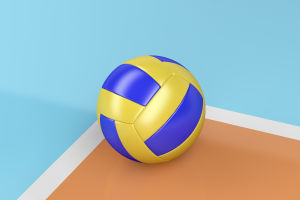Riding a motorboat is an exciting experience, offering a sense of freedom and adventure on the water.
However, to ensure safety and enjoyment, it's essential to master the correct operational techniques.
Whether you are a beginner or looking to improve your skills, these six fundamental tips will help you confidently navigate the waters.
1. Understand the Boat's Control System
Before setting off, it is crucial to familiarize yourself with the motorboat's control system. Modern motorboats typically have a throttle to control speed, a steering wheel to steer, and various other instruments, such as the rudder angle and water pump.
Each control system plays a vital role in operating the boat smoothly and safely. Take some time to practice in calm waters to get used to the throttle's response and how the boat turns when steering. This will help you avoid sudden or abrupt movements when driving.
2. Master Steering Techniques
When maneuvering a motorboat, the key is to make smooth, gradual adjustments. Unlike a car, a boat doesn't react immediately to changes in direction. Quick or sharp turns can make the boat unstable and potentially dangerous.
Therefore, steer the boat gently when turning. If you need to make a sharp turn, do so slowly and be ready to adjust course gradually. Additionally, remember that the boat's bow (front) will turn in the direction of the steering wheel, so anticipate this when navigating narrow areas or making turns.
3. Pay Attention to Water Conditions
Water conditions significantly affect the handling of a motorboat. Before setting off, always check the weather and water reports to ensure the waterway is suitable for driving. In rough seas or choppy waters, reduce speed to avoid crashing into waves that could destabilize the boat.
When crossing waves, choose an appropriate angle to minimize jarring motions. Calm waters are ideal for speeding up and cruising smoothly, while rough waters require more cautious maneuvering. Adjust your driving style according to the water conditions to ensure a stable ride.
4. Master Docking Techniques
Docking the motorboat is one of the most challenging parts. Whether approaching a dock or parking at a buoy, docking requires precise control and patience. When approaching a dock, reduce speed and slightly steer off course, keeping an eye on your surroundings.
Use the boat's reverse gear to slow down, and be ready to make small adjustments to avoid collisions. It's best to practice docking in calm waters before attempting it in more complex or crowded areas. Remember, slow and steady is the key to successful docking.
5. Prepare Proper Equipment
Before starting any boating adventure, it is crucial to ensure that the boat is equipped with the necessary safety gear. Every passenger must wear a life jacket, especially if they are a beginner or if the waters are unstable.
Additionally, make sure the boat is equipped with a first-aid kit, fire extinguisher, distress flares, and communication devices such as a phone or radio. Prepare waterproof bags for storing essentials and have navigation tools like maps or GPS to help you stay on course.
6. How to Handle Emergencies
Even under the calmest conditions, accidents can occur, so it's essential to know how to handle emergencies. First and foremost, stay calm. If the boat takes on water or the engine fails, having an emergency plan in place is crucial.
Always know the nearest harbor or safe area, so you can head there if the engine breaks down or if other mechanical issues arise. If someone falls overboard, ensure everyone on board knows emergency procedures, such as throwing a life ring and calling for help immediately. Practicing emergency drills will enhance your response ability in unexpected situations.
Motorboating is an exhilarating and rewarding activity, but it requires skill, awareness, and thorough preparation.
By following these six tips—understanding the boat's control system, mastering steering techniques, adapting to water conditions, practicing docking, ensuring safety equipment, and preparing for emergencies—you can ensure both safety and enjoyment. Whether you're cruising leisurely or embarking on an adventure, these tips will help you confidently handle the boat and focus on enjoying the ride.


